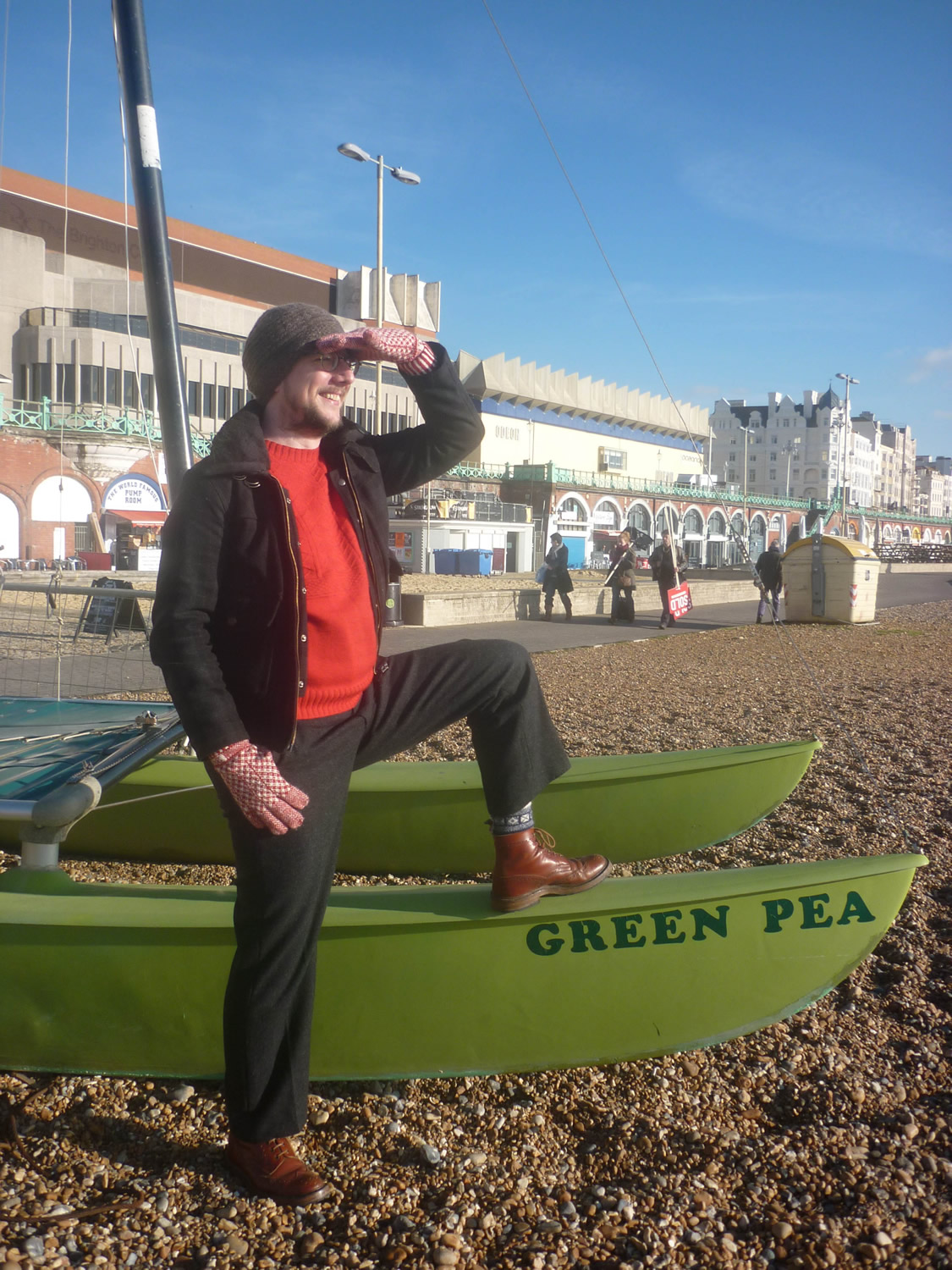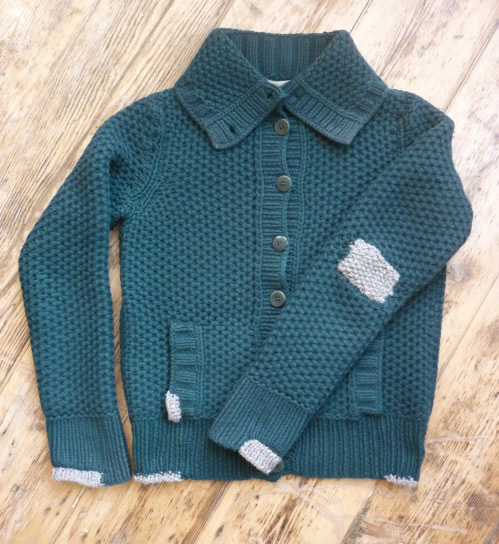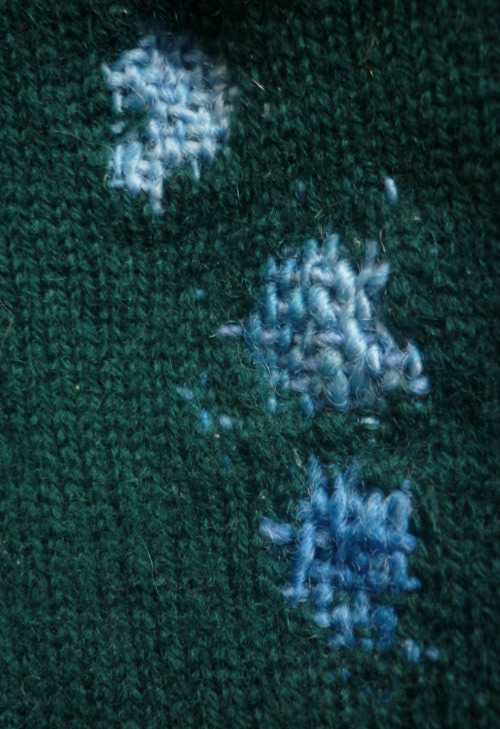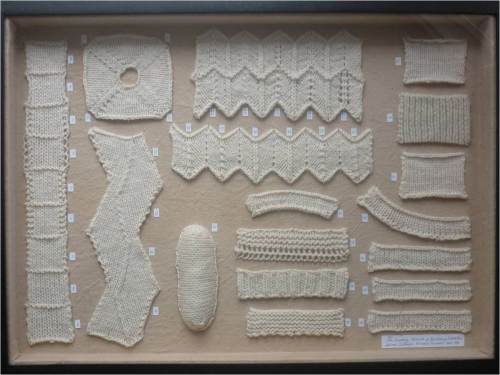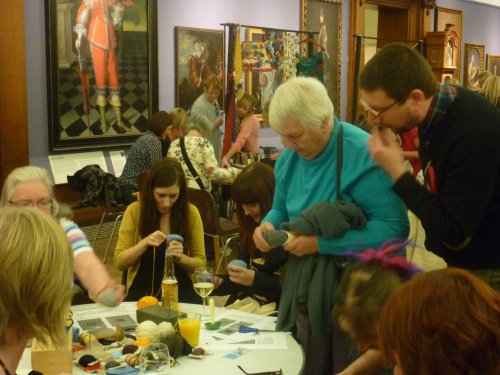A Q&A WITH TOM OF HOLLAND
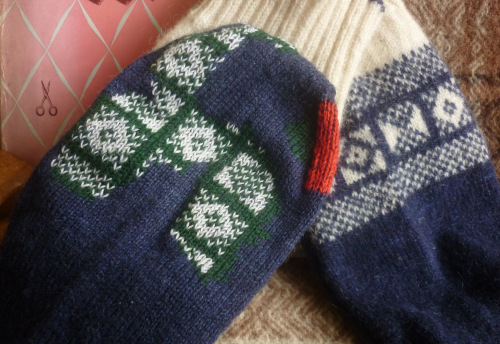
Continuing with our “Make Do and Mend” theme this month, we sat down with the incredible and talented Tom van Deijnen, AKA Tom of Holland, to discuss the joys of wool, Visible Mending, and the history of a garment. Read on for the interview…
Tom celebrates Wovember
• We know that you prefer to work with wool. What is it that makes wool so special for you?
Having grown up with grandparents who had a farm, with amongst others, sheep, my love for wool has always been there. Also, my mum used to knit a lot, and she always let me choose the wool for my jumpers. It’s only later, when I first learnt more about wool, and got involved with Wovember, that I started to realise what a truly amazing fibre it is. It is so diverse, and now that I’m more aware of the specific qualities of breed-specific fibres, I feel even more inspired by it; there’s a lot of exploring to do. From supersoft merino to coarse Herdwick, they all have something special to offer.
• Tell us a little about Wovember. How did you get involved?
Wovember was an initiative set up in November 2011 by Kate Davies and Felicity Ford. They were not happy about the lack of clear labelling and descriptions of garments, which were often portrayed as made from wool, but often not containing any wool at all. Through Wovember they hope to create a force for wool appreciation strong enough to effect changes in how garments and textiles are described and marketed. Felicity asked for a contribution, and I wrote a post about the etymology of the words “sheep” and “wool” in English and Dutch, as there are many links. Then last year I joined the team and we had a lot of fun running Wovember 2012. We have been lucky to get contributions from people in the wool world from many quarters – I still feel inspired!
Wear your repairs with pride!
• You’re something of a darning guru. What is it that draws you to repairing old garments over creating new ones?
Actually, I like both creating new garments as well as repairing them. Latterly, I’ve started to see this as a continuum. I’m an avid knitter, and once I’ve cast off something, then that is not the end of it. For me, a garment is never really finished, as I anticipate the repairs and alterations to come. I sometimes can’t wait for a hole to appear, as I already have some repair or darning ideas. I like my repairs “out and proud” and celebrate visible mends, which is why I set up the Visible Mending Programme.
With visible repairs, you can trace the history or a gament
• Your Visible Mending Programme is a great idea! How did this idea come about? Tell us a little bit about the programme…
I have always made minor repairs or embellishments to garments that had developed a hole or a stain. But I realised through hand-knitting that I cared more about my hand-knitted socks and jumpers, then about shop-bought clothes. Looking at a knitted garment, I can trace back where and when I made it. With The Visible Mending Programme I try to promote the same connection; when darning, you can think about when and where the garment was acquired, what occasions it was worn, and the motivation of the repair. A visible mend records and shows the history of a garment, with the darn worn as a badge of honour. By writing a blog, taking commissions and running workshops I can offer mending inspiration, services and skills to the world.
The Curiosity Cabinet of Knitting Stitches – coming February 15th
• What future exhibitions do you have coming up? Is there anything you can tell us? Any exclusives?
Spring is a busy time for me this year: on 15 February my new exhibition at Prick Your Finger opens: The Curiosity Cabinet of Knitting Stitches. This comprises two display cabinets of knitted swatches, exploring a large variety of techniques old and new, well-known and obscure, displayed as if they were part of a Natural History Museum collection.
Tom shares his wisdom at one of his regular darning classes
I also have a number of darning classes and workshops coming up: my regular darning class atSuper+SuperHQ in Brighton at the start of February. I’ll be running a drop-in darning class during the Wool House exhibition in Somerset House. And in May I will be running darning and mending day workshops atHope & Elvis in Wolsop, Nottinghamshire, and The Stitchery in Glasgow.
In between all this I’m planning to explore darning samplers, using woollen fabrics, patches and mending yarns.
• Finally, do you have any tips you can share with our readers? Any tips for seasoned darners or tricks that you wish you’d known about when starting out?
For practical darns (e.g. on socks) match thickness of mending yarn to that of garment under repair, or slightly thinner.
If a garment is felted, then look for alternative uses. Felting cannot be undone! However, felted wool is very warm and virtually windproof, so you could turn a felted sweater into mittens, or house slippers.
When darning socks or elbows, make sure that the darned area is large enough so that it covers the thinned area around the hole. Otherwise you’ll soon develop a hole right next to the darned patch.
Although I usually make very visible darns, sometimes an invisible mend is more appropriate. That’s why I always keep my left-over knitting yarns, so I can have a perfect match. And if you don’t have any of the original yarn, then don’t get hung up on attempting to match the fibre type. Try to match colour and texture instead.
You can check out Tom’s website and blog here – and don’t forget to follow him on Twitter!





